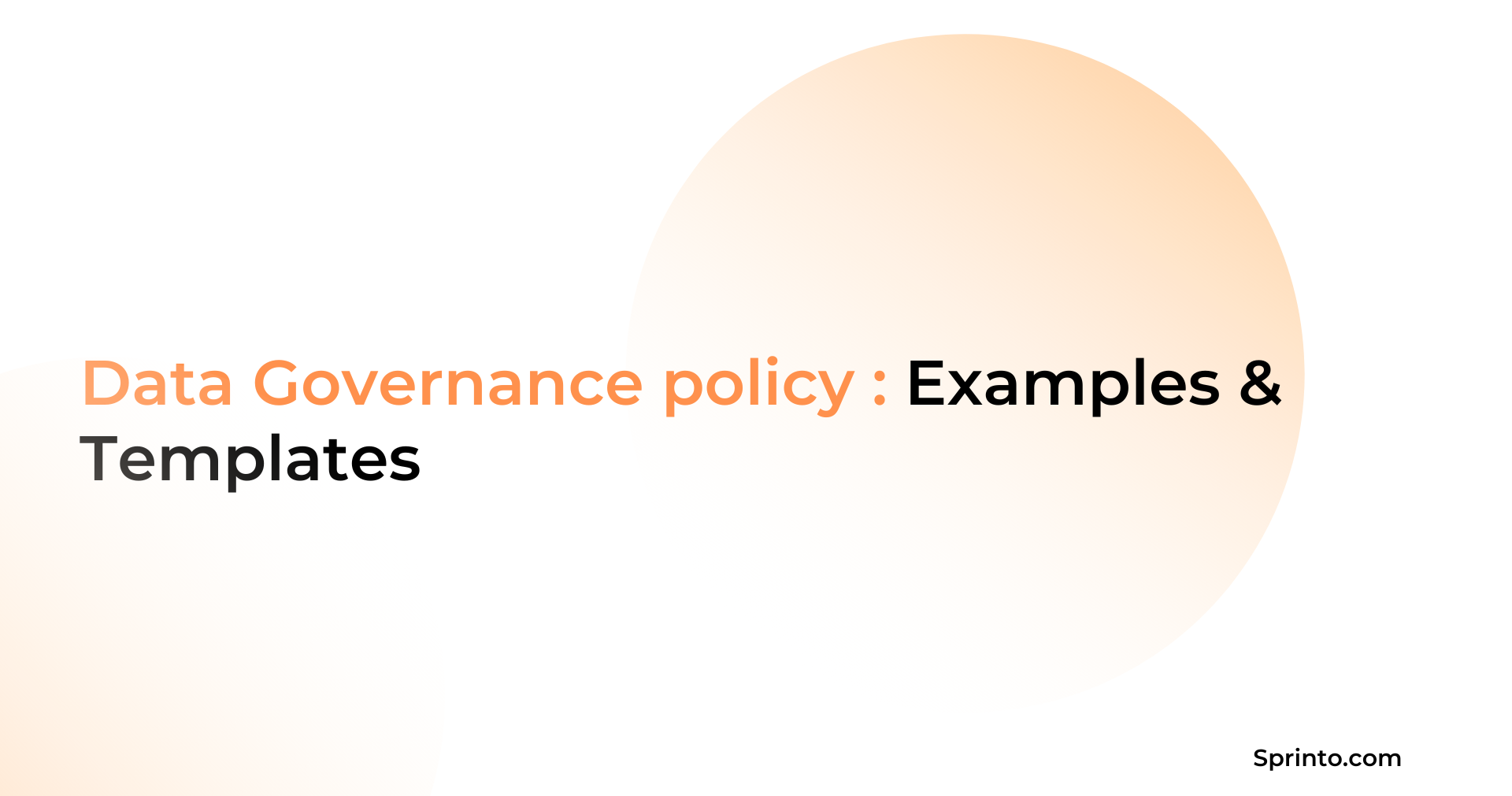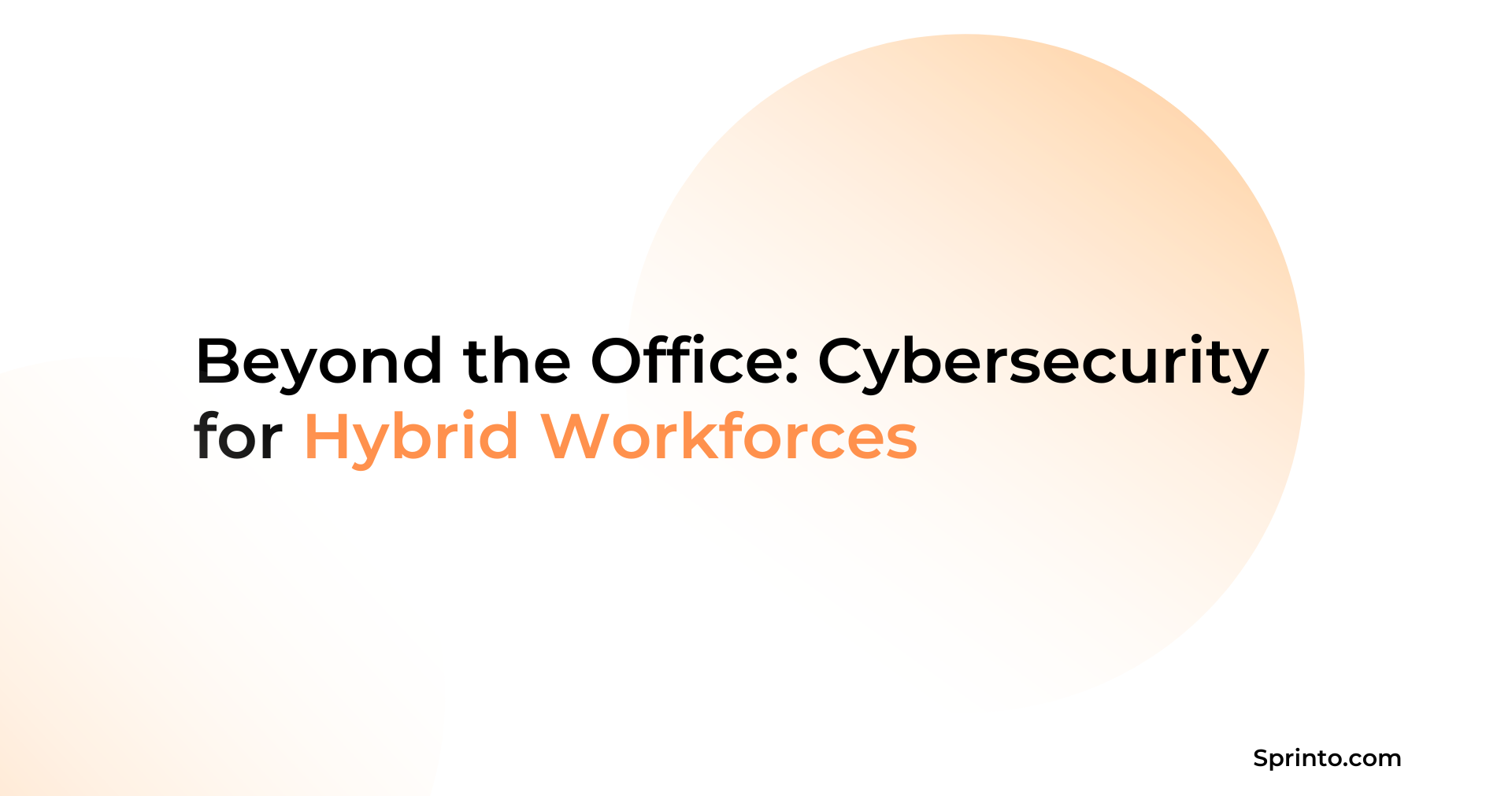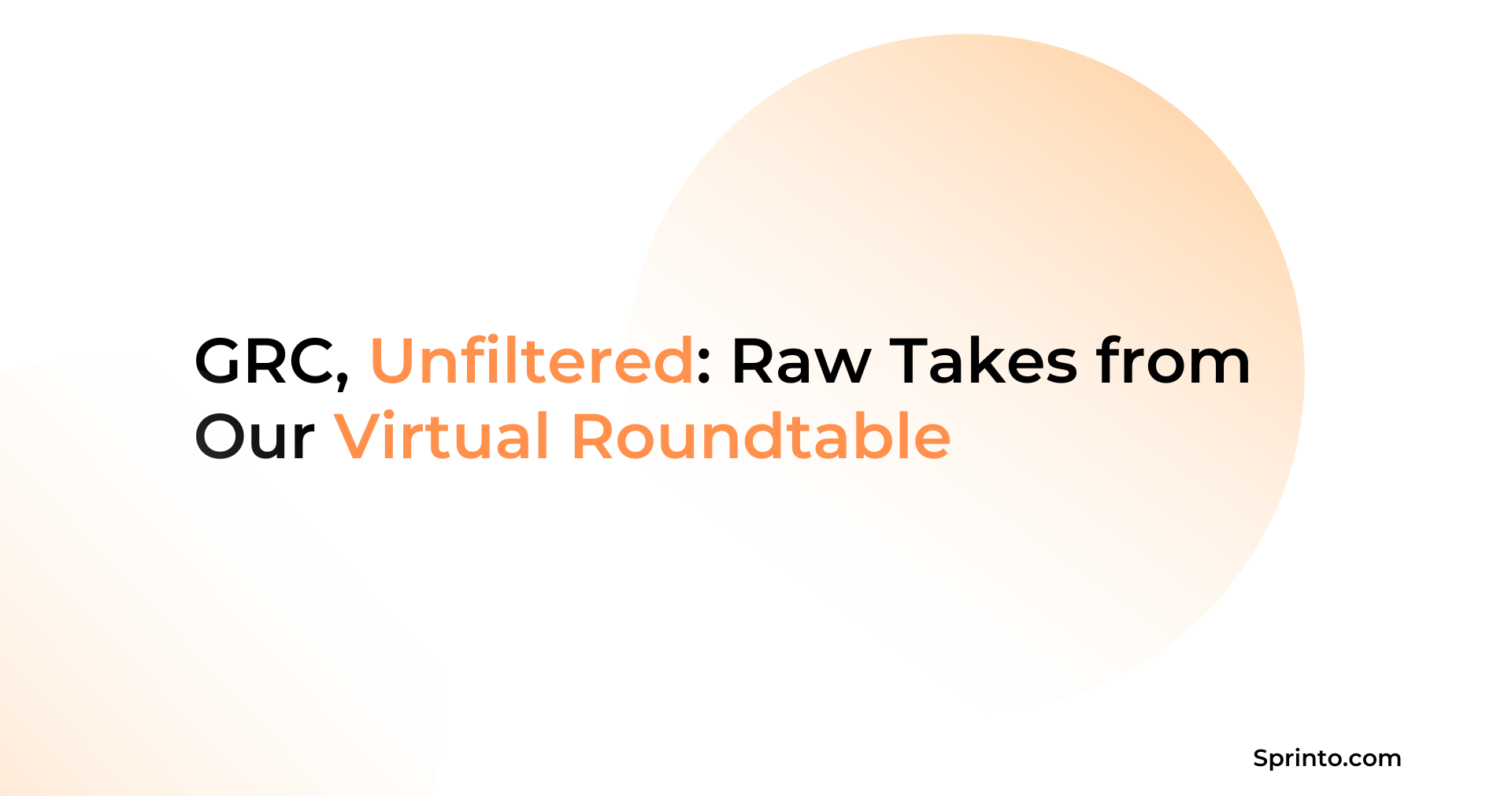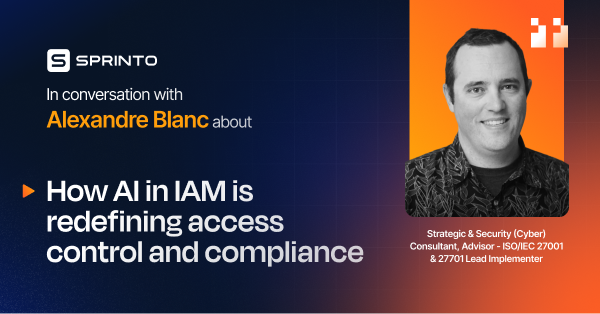Data Governance Policy: Steps to Create, Examples and Templates
Payal Wadhwa
Jul 22, 2024
When leaders discuss the biggest data governance implementation challenges, they often mention the challenge of getting the stakeholders on board. This difficulty typically arises from a lack of data literacy and tooling, combined with the complex notions about execution.
Now imagine a document that guides them on the hows and whys, serving as a blueprint for implementation. While some convincing may still be necessary, the effort is significantly reduced due to the clarity of the action plan.
A data governance policy is this essential written guide that drives an organization’s data governance initiatives. In this blog, let’s learn how to create one and provide some examples and templates to help you get started.
TL, DR:
| A data governance policy is a guiding document on how to manage an organization’s information assets |
| There can be different types of data governance policies such as data quality policy, data security policy, data privacy policy, data access policy and more |
| To develop a data governance policy you must define your needs and objectives, appoint a data governance ream, define data governance principles, finalize policy content, educate the workforce and implement, monitor and update |
What is a data governance policy?
A data governance policy is a document that guides the organization on how to manage and protect its data assets. It defines the rules and procedures to maintain data quality, security, privacy and compliance with regulations.
The organization’s data governance program is built upon the principles outlined in the policy, which changes and matures according to changing business needs.
Why is data governance policy important?
A data governance policy is crucial for establishing standards that streamline data processes, enhance their reliability, and improve accuracy. It outlines procedures to secure and manage information assets and acts as a single source of truth guiding the organization’s data practices.
The centralization of data helps minimize silos and ensure cross-functional collaboration and facilitates access to the right people.
Next, it helps organizations align practices with compliance requirements and data regulations such as GDPR and HIPAA.
Most importantly, data governance brings a data-driven culture that ensures well-informed decisions are made using quality data, which is critical for the company’s long-term success.
Types of data governance policy
A robust data governance policy has numerous sub-sections that detail aspects of quality, security, privacy etc. It is also common to have more than one type of policy to manage these aspects. The following are the types of data governance policies that an organization can have:
1. Data quality policy
A data quality policy provides guidelines to enable an organization to measure and enhance the quality of its data. Based on the current data quality of the organization and the quality objectives to be achieved such as relevance, accuracy, completeness, etc. the policy helps set tracking procedures for data under scope.
2. Data security policy
A data security policy outlines an organization’s approach to safeguarding data assets against breaches, tampering, unauthorized access, or any other threats. The policy specifies measures such as password management and access controls while also covering areas of data protection and risk mitigation.
3. Data privacy policy
A data privacy policy explains how sensitive information is managed, collected, used, or stored in a manner that minimizes privacy-reated risks. The policy has guidelines related to data sharing, disclosure, legal basis of processing, etc., and is generally documented to ensure compliance with privacy regulations such as GDPR.
4. Data classification policy
A data classification policy defines the classification of data into categories based on sensitivity and handling requirements. The classification is made based on the criticality of data, who it is suitable for, and the roles and responsibilities of any data owners or custodians associated with them.
5. Data retention policy
A data retention policy specifies the requirements for storage and disposal of data. It outlines the purpose of retaining data, storage conditions, safety measures, and appropriate retention periods. It also defines the business processes for the secure disposal of data.
6. Data access policy
A data access policy enforces rules and regulations to manage and control access to data. It outlines the access control principles and describes processes for requesting, approving, granting, and revoking access to crucial data. The goal is to ensure access to authorized people and eliminate any kind of misuse.
7. Data lifecycle management policy
A data lifecycle management policy encompasses all stages of data handling from creation, storage, usage, and sharing to archival and disposal. It ensures that data is protected at each stage and individuals responsible for managing various stages are well aware of their responsibilities.
8. Data ethics policy
A data ethics policy lays down the guidelines for handling data in a manner that aligns with the organization’s ethics and principles. It promotes fairness and accountability when collecting or processing individuals’ data and enhances the organization’s credibility in the eyes of the stakeholders. It also ensures that the data subjects’ rights are clearly understood and protected.
Leverage Sprinto’s in-built policy templates
Steps to develop a data governance policy
The right way to develop a data governance policy is to identify and address current problems, establish future needs, and align it with business context.
Following are the steps to develop an effective data governance policy:
1. Define the needs and objectives
The right way to determine the current data governance needs is to conduct an assessment of current data practices and engage with key stakeholders.
- The data assessment must review current data cataloging practices, existing policies regarding data access, security, privacy, etc., and data reliability and accuracy.
- The engagement with key stakeholders must begin with communicating the value of data governance and discussing their current problems. This helps ensure buy-in and have a comprehensive view to define objectives.
Based on the findings you can set measurable and achievable objectives to ensure effective data governance. For example, if the data accuracy of customer records is 85%, the objective can be to achieve 95% within 6 months.
2. Appoint a data governance team
You need company-wide cooperation and cross-functional collaboration to create and implement the data governance policy. So start by appointing a data governance team with clear roles and responsibilities. The team would broadly have the following:
- Executive sponsors: The C-suite sponsors are responsible for the allocation of resources and providing strategic guidance
- Data Protection Officer: Data protection officers oversee the entire data governance program
- Data Governance Council: The data protection council comprises functional heads for various organizational units
- Data stewards: Data stewards are responsible for the implementation of data governance efforts and they report to data owners.
- IT team: The IT team takes up all technical and infrastructure-related responsibilities.
3. Define data governance principles
To ensure a well-defined data governance policy, you’ll need to define the governing principles. These principles will lay the foundation of how data will be managed and protected. Some key data governance principles include:
- Accountability: Defining owners who take responsibility of their actions
- Integrity: Establishing standards that ensure data is accurate, complete, and reliable to the best of the knowledge of data owners.
- Transparency: Ensuring data-related communication and decisions are transparent.
- Auditability: Maintaining comprehensive data records so they can be examined and verified when required.
- Stewardship: Appointing data stewards who are data domain experts to ensure data is responsibly managed.
- Checks and Balances: Ensuring a balanced distribution of accountabilities and oversight among teams to share data integrity and minimize risks.
- Standardization: Implementing consistent data management practices and processes for collection, storage and transmission.
- Change management: Introducing any changes in a systematic and controlled manner to minimize business disruptions.
4. Finalize policy content
The next step is to finalize the policy content including the controls that must be implemented. The key components of the data governance policy include:
- Purpose and scope: This section covers the objectives of creating a policy and the scope of the policy including the types of data covered, the departments and people under the policy and more.
- Definitions: The definition section explains any key terms and concepts used in the policy to have a common understanding.
- Responsible parties: This section clearly defines the roles and responsibilities of the concerned parties such as data owners, stewards etc.
- Controls: This section defines controls for data enrichment, access, security, archiving, retention etc.
- Related policies and references: If you have different policies for data usage, data access, data retention etc., you must link all the related policies to this master data governance policy.
5. Educate the workforce and implement measures
You will need to develop a data governance training program to educate the workforce on the broad framework, the key steps, best practices, and usage of any tools for governance and compliance. They must also be trained on their responsibilities and if the organization is subject to compliance requirements, mandatory security training must also be carried out.
Next, start building and implementing a pipeline of controls to establish data governance such as access controls, data encryption, incident response plans, third-party risk management and more. Tools such as the ones for data lineage, data quality monitoring, compliance automation etc. will help automate the process and streamline workflows.
6. Monitor and update
Data governance is an ongoing process so you’ll need to set up a continuous monitoring mechanism to ensure policy enforcement regularly. Track key performance indicators and review governance and compliance reports to pinpoint gaps. Also, the policy is not a static document and must be regularly updated to meet evolving landscape changes.
Automate GRC with Sprinto
Data governance policy templates and examples
Here are some real-life examples and templates of data governance policy that you can refer to:
University of Nevada, Las Vegas
New Hampshire Department of Education
These policies have key components as we discussed above. You can personalize these based on your business context and needs.
Balance governance and compliance with Sprinto
While a data governance policy is a living document laying the foundation of a data governance program, you need enablers to enforce the policy and ensure sustainability. It is a long-drawn and continuous process that when done manually can drain resources and shift the focus away from business-critical tasks. That’s where a next-gen GRC tool like Sprinto come into the picture.
Sprinto is an GRC automation platform that helps you manage all aspects of data governance with agility and efficiency.
- View policies, manage senior leadership reviews, maintain critical system access etc, to ensure better governance practices
- Manage risk profiles and assign owners for better accountability and quick risk mitigation
- Gain a quick summary of the compliance health along with granular access to control monitoring functionality within a single dashboard
- Keep your controls on track by allowing Sprinto to notify you when controls are about to fail.
Leverage in-built policy templates, automated evidence collection, training modules, complementary security trust pages and more within a single platform.
Ensure ongoing Governance while achieving regulatory compliance across frameworks with ease. See Sprinto in action and kickstart your GRC initiatives today.
FAQs
What is the difference between a data governance framework and policy?
A data governance framework is a roadmap that provides structured guidance on how to manage data assets while the data governance policy is a written document that establishes rules to ensure data management and governance.
What are the 4 key data governance roles?
The 4 key roles in data governance are data admins or owners, data stewards, data custodians and data users.
Data admins oversee the data governance program initiatives and data stewards are responsible for the implementation of policies. Data custodians manage the technical aspects such as those related to storage and security and data users are responsible for using data in accordance with the policy.
How often is the data governance policy reviewed?
The general advice is to review the policy annually or whenever there are any significant infrastructure changes. However, the review process and frequency can vary as per organizational requirements and needs.


Use Sprinto to centralize security compliance management – so nothing
gets in the way of your moving up and winning big.





















